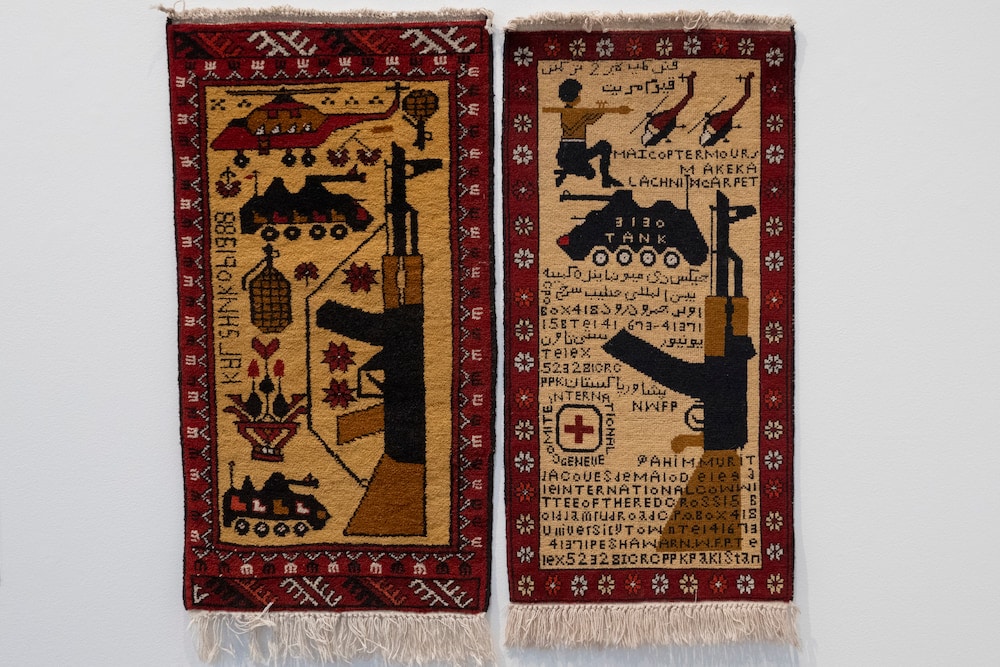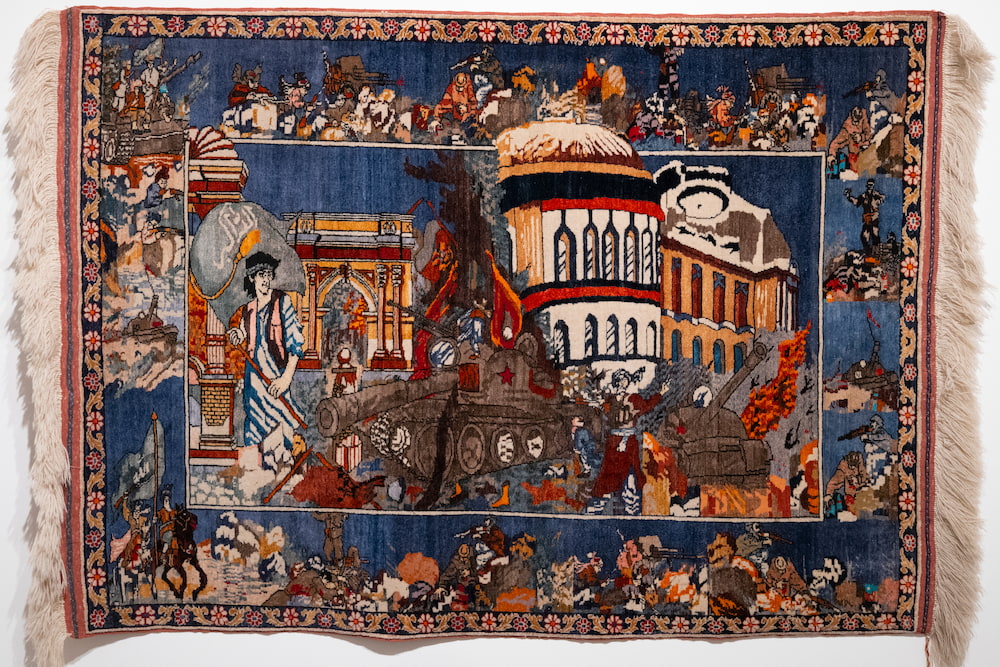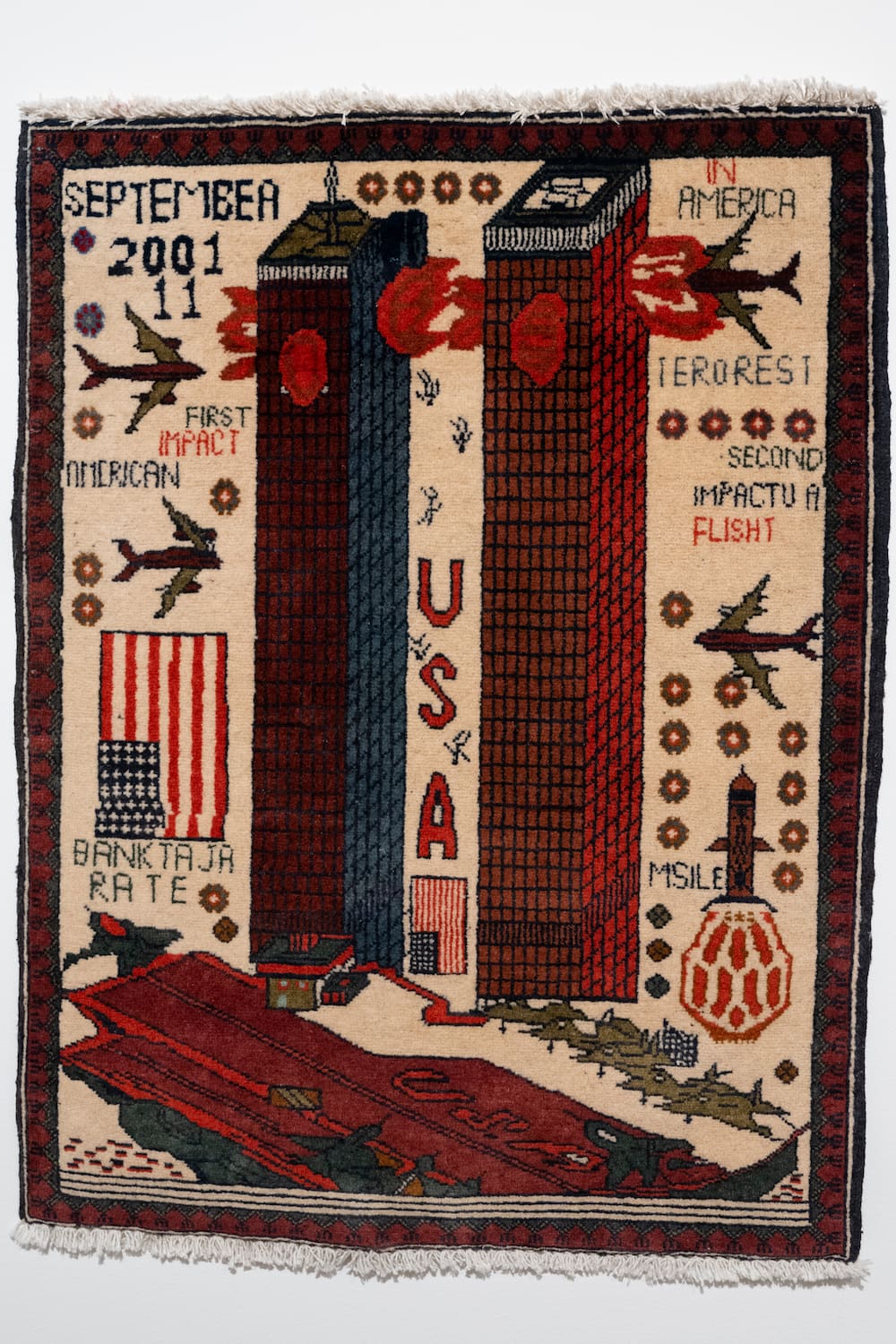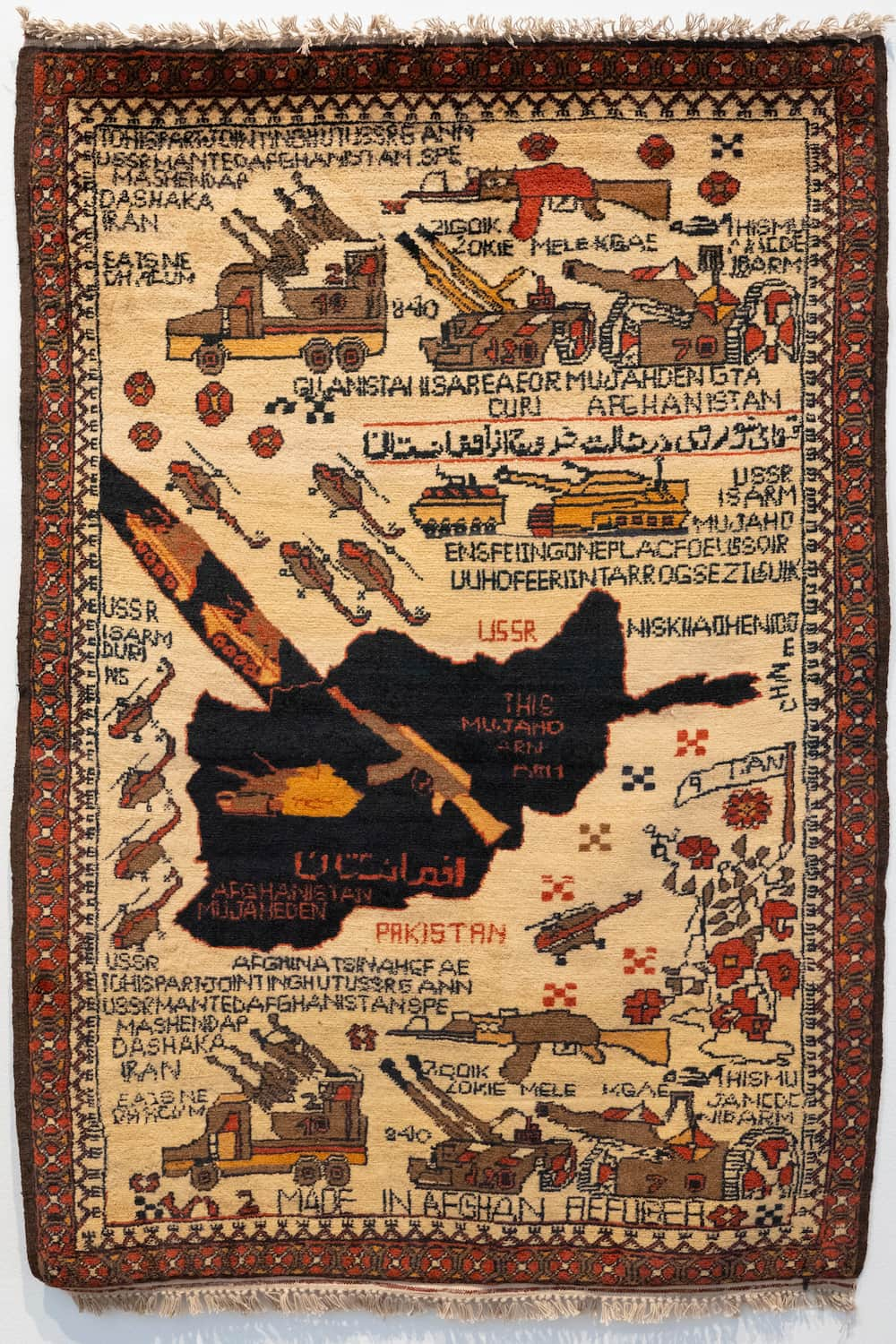Australian troops left Afghanistan last month, almost 20 years since the US invaded in the War on Terror – another chapter in the Central Asian country’s troubled history of revolution, occupation, and civil war. Coincidentally, an exhibition of war rugs at ANU’s Drill Hall Gallery this winter shows how more than 40 years of conflict have left their marks on the country’s art – and its citizens.
I Weave What I Have Seen displays more than 40 Afghan war rugs, considered one of the world’s richest traditions of modern war art. This is the first time war rugs have been exhibited in the ACT – and possibly Australia – since 2003. It is, organisers say, a testimony to the weavers’ creativity and resilience.
“War’s the worst catastrophe of all; war disturbs the foundation of society,” says Afghan rug dealer Sabur Fahiz, who supplied many of the rugs to collectors and co-curators Professor Timothy Bonyhady and Nigel Lendon.

Most of the rugs are made by women, Mr Fahiz explains, both in villages and refugee camps. (Afghans are the world’s second biggest group of refugees after Syrians; Canberra alone has 650 refugees.)
“Weaving is a very old profession; mostly they weave whatever is around them. In these rugs, they’re seeing war, artillery, aeroplanes, rocket launchers. These are documentations of war in the form of artwork, floor coverings, wall hangings.”
Some are traditional: the seventh-century lovers Leyli and Majnun, framed by peacocks, machine guns, helicopters, and planes, or reimagined as mujahideen warriors; pomegranate trees next to rocket launchers; the modernising king Amanullah, with tanks and pistols.
Some are abstract: friezes of bullets and missiles, borders of grenades.

Others are like propaganda posters: 1980s Communist leader Najibullah depicted as a Soviet puppet; a social realist tableau of burning tanks in front of a palace; a Kalashnikov rifle rising out of an Uncle Sam hat. And in Afghan homes, food is served on mats decorated with stylised tanks, planes, and missiles.

“There’s a long tradition of Afghan weavers making pictorial rugs,” explains Professor Bonyhady. “Rather than making geometric designs, these have people, animals, landscapes, often with narrative content. [War rugs] both adapt designs which they had before the war, and develop different designs that include weaponry and sometimes fighters, and in different ways depict the conflict.”
After 9/11, rugs appeared showing planes crashing into the World Trade Center. When the US began Operation Enduring Freedom to oust the Taliban and destroy the al-Qaeda training camps, weavers adopted motifs of American aircraft carriers and cruise missiles.

Bonyhady and Lendon had collected war rugs for years, but were amazed by the imagery. “In the wake of 9/11, the depiction of the war seemed really salient,” Professor Bonyhady says.
A rug takes eight months to a year to make; some villages make 20 rugs a year. It is, Mr Fahiz says, part-time work for a woman – when not looking after her children or cooking dinner. The weavers are quite well-off by Afghan standards; with the money they make, they can afford to educate their children to become doctors or engineers.
The first war rugs were made during the Communist Saur Revolution of 1976, Professor Bonyhady explains; those celebrate the coup, and show tanks and jet fighters attacking the presidential palace.
The Soviet occupation of Afghanistan (1976–1989) ushered in “an extraordinary period of creativity,” he argues.
Weavers in Afghanistan sold rugs to Soviet officials and officers and to Western diplomats and journalists in Kabul. These ‘non-partisan’ rugs depicted the fact of war.

But six million Afghans fled to Pakistan and Iran – the biggest group of refugees in the world at the time. The rugs they made were often pro-Mujahideen and anti-Communist.
“These are extraordinary works of art, and they show amazing creativity in the worst of conditions,” Professor Bonhady says. “The fact that Afghan weavers throughout this long period of war have shown such inventiveness and creativity, and made such powerful works of art is astonishing … a testimony to their resilience.”
I weave what I have seen: The War Rugs of Afghanistan, ANU Drill Hall Gallery, until 15 August. More information online.



